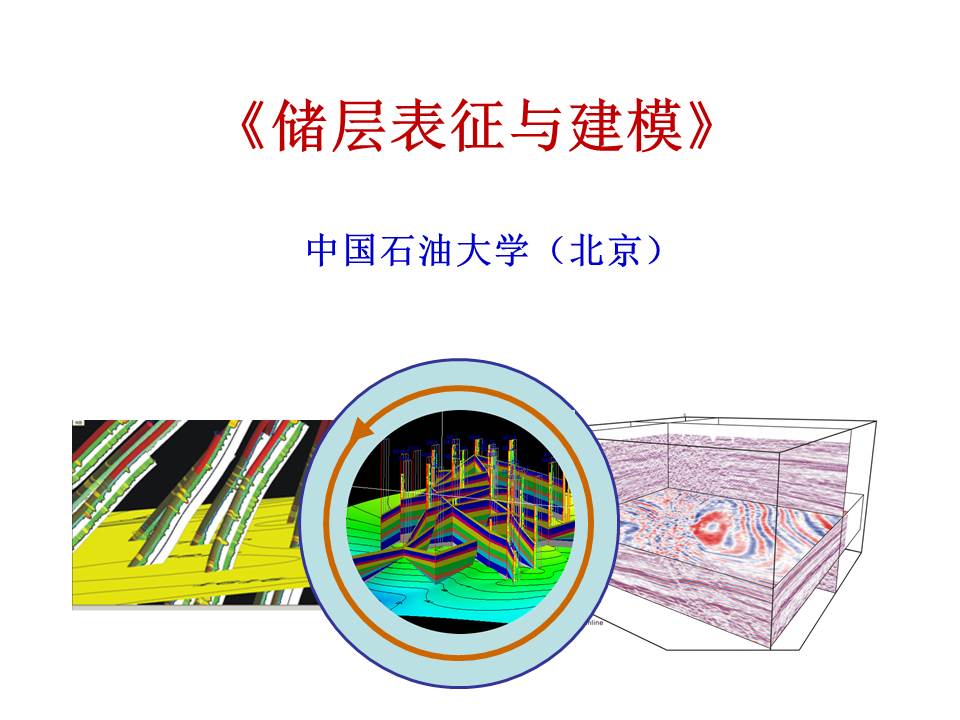
当前课程知识点:Intermediate Accounting II (中级财务会计II) > Week 2: Chapter 1 Liability and contingencies : Part Two > C1-06 Warranty > C1-06 Warranty
返回《Intermediate Accounting II (中级财务会计II)》慕课在线视频课程列表
返回《Intermediate Accounting II (中级财务会计II)》慕课在线视频列表
Hello everyone,
大家好
today we will learn the accounting treatment for Warranty.
今天我们将学习关于担保的会计处理
Warranty is a type of guarantee that products
保修是一种保证产品
will be free from defects for a limited period,
在有限的时间内没有缺陷的一种保证
agreeing to fix or replace them if they are faulty
如果产品有故障 同意对其进行修复或更换
There are two common forms of warranties:
有两种常见的保修形式
those provided by the manufacturer
由制造商提供的保修
included in the sales price of the product
包含在产品的销售价格中
and those sold separately.
另一种是单独销售的
Firstly,
首先
let's discuss the sale warranty situation through a case.
我们通过一个案例来讨论销售保修的情况
For example,
例如
Assume you purchase a new TV for $2 000,
假设你花2000美元买了一台新电视机
you got one year warranty from the manufacturer.
你就可以从制造商那里得到一年的保修期
You also will buy
您还将购买
an extended warranty for another two years
一个延长保修两年的
with an $50 additional cost.
额外费用50美元
In this case,
在这种情况下
the seller should recognize the extended warranty
卖方应采用销售保证法单独确认延长保修期
separately by using the sales warranty approach.
卖方应采用销售保证法单独确认延长保修期
Companies defer revenue on the sale of extended warranty
公司推迟销售延长保修期的收入
通常在合同期限内按直线法确认
and generally recognize it
通常在合同期限内按直线法确认
通常在合同期限内按直线法确认
on a straight-line basis over the life of contract.
通常在合同期限内按直线法确认
on a straight-line basis over the life of contract.
At the time of sale,
在出售时
the seller record the sale as following:
卖方将销售记录如下
Because the total cash that collected by the company
因为公司收的现金总额
is 2000 plus 50 equals 2050,
是2000加50等于2050
so we Dr: Cash 2 050,
所以我们要 Dr:现金2050美元
Cr: Sales 2 000,
Cr:销售额2000
and put the sale warranty amount 50 dollars
然后把50美元的保修金额
into Unearned warranty revenue account,
存入非应得的保修收入账户
Because,
因为
the sale warranty covers two years time.
产品保修期为两年
So each year 25 dollars.
每年25美元
At the end of second year,
第二年年底
the company recognizes revenue as:
公司确认收入为
Dr: Unearned warranty revenue 25
借:不劳而获的保修收入25
Cr: Warranty revenue 25
贷:保修收入25
Next,
接下来
let's continue to learn
让我们继续学习
the warranty included in the sales price.
销售价格中包含了保修条款
Within the warranty time,
在保修期内
the manufacturer may promise
制造商可承诺
to bear all or part of the cost of replacing defective parts,
承担更换有缺陷部件的全部或部分费用
to perform any necessary repairs or servicing without charge,
免费进行任何必要的修理或维修
or even sometimes to refund the purchase price.
甚至退还货款
Warranties entail future cost,
保修包括未来成本
sometimes also called "post-sale costs".
有时称为“售后成本”
These additional cost frequently are significant.
这些额外的成本通常很可观
Recall from previous lesson
回想上节课
that a provision is an obligation that is uncertain
准备金是一种不确定的义务
in either amount or timing.
在金额或时间上
So warranty cost
所以保修费用
are a classic example of a provision.
是一个典型的例子
Companies use two basic methods
公司使用两种基本的
of accounting for warranty costs:
保修会计方法成本
the cash basis method and the accrual method.
现金基础法和权责发生制
Under the cash basis method,
在收付实现制下
companies expense warranty costs as incurred.
公司在发生时支付保修费用
The cash basis method only be used
现金基础法只适用于
when warranty costs are immaterial
当保修成本不重要
which means very small amount
也就是说非常少时
or the warranty period is relatively short.
或保修期相对较短时
It may be helpful to look at a case:
下面的例子可能会有所帮助
In 2020,
2020年
A company manufactured and sold $1,000,000 of tables.
一家公司制造并销售了价值100万美元的桌子
A company provides one-year unconditional warranty
一家公司提供一年无条件保修
on all tables it sells.
对其出售的所有餐桌
Due to the nature of the product,
由于产品的性质
few clients have occasion to claim under the warranty
很少有客户有机会在保修期内提出索赔权利要求
and the amount of the claims are immaterial.
而索赔的数量是不重要的
During the year,
本年度内
the costs of A company meeting its warranty obligations
公司履行保修义务
for replacement tables $5,000.
更换桌子的费用为5000美元
Because the warranty cost are immaterial,
由于担保成本是不重要的
so A company
所以A公司
accounts for its warranty expenses using the cash basis.
使用现金制来核算担保费用
Under the cash basis method,
在收付实现制下
the company
公司
only record expense when the replacement really happened.
只在更换确实发生时才记录费用
So
所以
to recognize partial satisfaction of the warranty obligation:
确认保证义务的部分履行
Dr. Warranty expense 5 000
保修费5000元
Cr.Table inventory 5000
Cr.Table库存5000
Normally,
通常
in the year end,
在年底
the company may still adjust their entry
公司仍然可以调整他们的入账
to ensure proper provision for year.
以确保适当的年度拨备
For example:
例如
Dr. Warranty Expense
Dr.保修费用xxx
Cr. Provision for Warranty Payable
Cr.应支付xxx的担保条款
Sometimes,
有时
no justification made when the warranty liability in the year end.
没有正当理由的保修责任在年底
However,
但是
two conditions must be met if no adjustment is made.
如果不进行调整 则必须满足两个条件
First,
第一
it is not probable that a liability has been incurred
不太可能发生负债
or it cannot reasonable estimate the amount.
或它无法合理估计数额
Next,
接下来
let's learn another method,
让我们学习另一种方法
which is Accrual Basis method.
即权责发生制
The generally accepted method is the accrual method.
公认的方法是基于权责发生制的方法
We estimate warranty provisions using expected value techniques,
我们使用期望值技术估计保修准备金
which weight possible outcomes
该技术通过相关的概率
by their associated probabilities.
来衡量可能的结果
While neither the exact amount of the obligation
虽然债务的确切金额
nor the customers that will require warranty work
和需要保修工作的客户
are known with certainty,
都不确定
the provision represents a reasonable estimate of the amount
但准备金是对最终将在货物或服务中
that will ultimately be provided in goods or services.
提供的金额的合理估计
Although
尽管
we discuss warranties as part of current liabilities,
我们将担保作为流动负债的一部分进行讨论
warranties can often extend beyond one year.
但保修期通常会超过一年
The expected obligation for the year following the balance sheet date
资产负债表日后一年的预期债务
is reported as a current liability,
被列为流动负债
and the remainder would be classified as
其余部分则被归类为
a non-current provision.
非流动准备金
Let's look at another example for accrual basis method.
让我们看另一个权责发生制的例子
In 2020,
2020年
B company manufactured and sold
B公司制造并销售了
$100,000,000 of machines.
100000000美元的机器
B company provides
B公司
a three-year warranty on each new machine it sells.
对其销售的每台新机器提供三年保修
Using expected value techniques,
使用预期值技术
B company estimates
B公司估计
that the cost of the warranty obligation
保修义务的成本
will be 1% of sales in each of the first two years
在销售年度后的头两年
following the year of sale,
每年为销售额的1%
and 2% of sales in the third year following the sale.
在销售后的第三年为销售额的2%
In 2021,
2021年
the cost to B company of meeting its warranty obligations
B公司履行其保修义务的成本
was $900,000
为900000美元
Which is $500,000 for parts
零件为500000美元
and $400,000 for labour.
劳动力为400000美元
Firstly,
首先
we have to estimate the warranty provision
我们要用期望值法
for all three years by using expected value method.
估算所有三年的保修期
The expected value of provision
计提准备金的预期价值
equals $100,000,000 multiply 1% plus 1% plus 2%
=$ 100,000,000×(1% + 1% + 2%)
Which is equals $4,000,000;
=$4,000,000
At the end of 2020,
在2020年底
the company recognize the provision as:
公司确认该条款为
Dr. Warranty expense 4,000,000
Dr.保修费用4,000,000
Cr. Provision for warranty payable 4,000,000
支付4,000,000美元的保修条款
and $1,000,000 would be reported as a current liability
100万美元将被报告为流动负债
and $3,000,000 as a non-current liability.
300万美元将被报告为非流动负债
In 2021,
2021年
the company recognize warranty cost $900,000:
公司确认保修费用为90万美元
Dr. Provision for warranty payable 900,000
提供90万美元的保修费
Cr. Parts inventory 500,000
零件库存50万
Cr. Wage expense 400,000
工资费用40万
Now,
现在
lets compare cash basis method and accrual method,
让我们比较一下收付实现制和权责发生制
then you will see
你就会明白
why the accrual method is more popular.
为什么权责发生制更受欢迎
In many instances,
在许多情况下
application of the cash basis method
采用收付实现制的方法
fails to record warranty costs relating
无法将在某一特定时期内
to the products sold during a giving period
销售的产品的保修成本
with the revenues derived from such product.
与该产品的收入相结合
If B company applies the cash basis method,
如果B公司采用现金基础法
it report $900 000 as warranty expense in 2021,
2021年将90万美元列为保修费用
but it record all sale price as revenue in 2020,
但在2020年将所有销售价格记录为收入
which violates the expense recognition principle.
这违反了费用确认原则
That's why the accrual method is generally accepted.
这就是权责发生制被普遍接受的原因
Before we say goodbye,
在我们说再见之前
let's do an exercise together.
让我们做一个练习
Sales made in fiscal 20X0 for $50,000,000
在20X0财年的销售额为5000万美元
include a 5 year warranty coverage.
其中包括5年的保修期
The estimated cost for warranty
预计
is expected to be 2% for the first 4 years
前4年的保修费为2%
and 5% for the last year.
最后一年为5%
Determine how much warranty expense
确定有多少保修费用
will be recorded in fiscal 20X0.
将被记录在20X0财政账目中
To answer this question,
为了回答这个问题
we have to do a calculation
我们必须首先
using expected value techniques first.
使用期望值技术进行计算
From year one to year four,
从第一年到第四年
the estimated cost is 2%,
估计成本是2%
so the expected value of year 1 to year 4
所以第1年到第4年的预期值
is 50 million multiply 2% multiply 4 equals 4 million.
是5000万乘以2%乘以4等于400万
Then the expected value of the fifth year
那么第五年的预期值
is 50 million multiply 5% equals 2.5 million.
是5000万乘以5%等于250万
Then we add those together,
然后我们把这些加在一起
so the answer is D,
结果是D
6.5 million.
650万
Ok, that is for today's class.
好了 今天的课就到这里
I will see you in next class.
下节课见
Bye bye!
再见
-C1-01 Introduction and Definition
--C1-01 Introduction and Definition
--C1-01 Exercises
-C1-02 Current Liability:Accounts Payable
--C1-02 Current Liability:Accounts Payable
--C1-02 Exercises
--C2-02
-C1-03 Current liability: Notes Payable
--C1-03 Current liability: Notes Payable
--C1-03 Exercises
--C1-03
-C1-04 Unearned Revenue
--C1-04 Exercises
--C1-04
-C1-05
--C1-05 Customer Loyalty Programs
--C1-05 Exercises
--C1-05
-C1- comprehensive exercises
-C1-06 Warranty
--C1-06 Exercises
--C1-06
-C1-07 Contingencies
--C1-07 Exercises
--C1-07
-C1-08 Non-current Liability: Introduction and fundation
--C1-08 Non-current liability: Introduction
--C1-08 Exercises
-C1-09 Financial Leverage and Credit Angencies
--C1-09 Financial leverage and credit angencies
--C1-09 Exercises
-C1-10 Fundation of Bond
--C1-10 Exercises
-C1-11 The Valuation of Bonds
--C1-11 Exercises
-C1-12 Bonds Payable
--C1-12 The valuation of bonds payable
--C1-12 Exercises
-C1-13 Timing of Bond Issuance
--C1-13 Timing of Bond Issuance
--C1-13 Exercises
-C1-14 The Effective Interest Method
--C1-14 The Effective Interest Method
--C1-14 Exercises
-C1-15 The effective interest method and straight line method
--C1-15 The effective interest method and straight line method
--C1-15 Exercises
-C2-01 Introduction
--C2-01 Exercises
-C2-02 Components of Equity
--C2-02 Exercises
-C2-03 Foundation and Definitions
--C2-03 Foundation and Definitions
--C2-03 Exercises
-C2-04 Retained Earnings and AOCI
--C2-04 Retained Earnings and AOCI
--C2-04
--C2-04 Exercises
-C2-05 Issuance of Shares and Stock Splits
--C2-05 Issuance of Shares and Stock Splits
--C2-05 Exercises
-C2-comprehensive exercise 1
-C2-06 Reacquisition of Shares
--C2-06 Reacquisition of Shares
--C2-06 Exercises
-C2-07 Dividends
--C2-07 Exercises
-C2-08 Property dividends
--C3-08 Property dividends and summary
--C2-08
--C2-08 Exercises
-C2-09 Introduction of EPS
--C2-09 Exercises
-C2-10 Basic EPS Caculation-numerator
--C3-10 Basic eps caculation-numerator
--C2-10 Exercises
-C2-comprehensive excercise 02
-C2-11 C2-11Basic eps caculation-denominator
--C2-11Basic eps caculation-denominator
--C2-11 Exercises
-C2-12 C2-12 Delutive EPS caculation1
--C2-12 Delutive EPS caculation1
--C2-12 Exercises
-C2-13 C2-12 Delutive EPS caculation2
--C2-13 C2-12 Delutive EPS caculation2
--C2-13 Exercises
-C2-14 All Put Together Case
--C2-14 Exercises
-C3-01 Introduction
--C3-01 Exercises
-C3-02 Temporary Differences
--C3-02 Exercises
-C3-03 Tax Allocation Methods
--C3-03 Tax Allocation Methods
--C3-03 Exercises
-C3-04 Applying the Accrual Method
--C3-04 Applying the Accrual Method
--C3-04 Exercises
-C3-05 Tax Losses
--C3-05 Exercises
-C4-01 Introduction and Fundation of Pension
--C4-01 Introduction of Pension
--C4-01 Exercises
-C4-02 Accounting for pension plans
--C4-02 Accounting for pension plans
--C4-02 Exercises
-C4-03 Components of pension accounting1
--C4-03 Components of pension accounting1
--C4-03 Exercises
-C4-04 Components of pension accounting2
--C4-04 Components of pension accounting2
--C4-04 Exercises
-C4-05 Implementing Pension Accounting for Defined Benefit Plans
--C4-05 Implementing Pension Accounting for Defined Benefit Plans
--C4-05 Exercises


